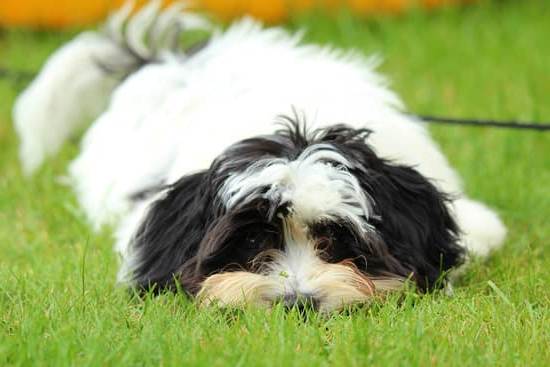How do I train my dog to stop running off? Many pet owners have faced the challenge of their furry companions darting away unexpectedly. Understanding why dogs run off is crucial in addressing this behavior. Dogs are natural explorers and may run off due to their instinctual behaviors or triggers such as fear or excitement. By identifying the underlying reasons for running off, pet owners can effectively train their dogs to stay close.
Creating a strong bond with your dog is essential in preventing them from running off. Building trust, loyalty, and effective communication through consistent training helps strengthen the owner-dog relationship. Basic obedience training plays a vital role in establishing control over your dog. Teaching commands like sit, stay, and come, using positive reinforcement techniques, and incorporating rewards and treats can motivate your dog during training sessions.
Training for recall is key in ensuring that your dog responds promptly when called. A reliable recall command should be practiced in controlled environments before progressing to off-leash training with distractions present. Reinforcing boundaries and using physical or visual cues help establish clear limits for your dog’s safety.
Consistency, patience, and the use of appropriate training tools are necessary for successful training outcomes. If needed, seeking professional help from certified trainers or behaviorists can provide specialized guidance in addressing running off behavior effectively.
Creating a Strong Bond With Your Dog
Building a strong bond with your dog is essential in not only preventing them from running off but also in fostering a healthy and loving relationship. By establishing trust and loyalty through consistent training, you can ensure that your dog looks to you as their leader and protector. One of the key aspects of building this bond is by spending quality time together, engaging in activities that you both enjoy, and positively reinforcing good behavior.
Establishing Communication and Understanding
Communication is key when it comes to training your dog effectively. By learning to understand your pet’s body language, vocal cues, and behavior patterns, you can better respond to their needs and concerns. This mutual understanding creates a sense of security for your dog, making them less likely to run off in search of something they feel is missing. Consistency in communication also helps in reinforcing boundaries and expectations within your household.
Strengthening the Owner-Dog Relationship
Strengthening the bond between you and your dog involves more than just obedience training; it requires emotional connection and empathy. Taking the time to engage in playtime, grooming sessions, or simply cuddling on the couch can deepen the emotional attachment that your dog feels towards you.
This emotional bond acts as a strong deterrent for running off as your dog becomes more content and secure in their relationship with you. Remember, a happy and fulfilled dog is less likely to feel the need to wander off in search of adventure or companionship.
Basic Obedience Training
When wondering, “How do I train my dog to stop running off,” one of the foundational steps is to focus on basic obedience training. Teaching your dog essential commands such as sit, stay, and come can play a crucial role in preventing them from running off when outdoors. Here are some key points to consider when working on basic obedience training with your furry companion:
- Consistency is key: Make sure to consistently practice these commands with your dog in various environments to reinforce their understanding.
- Positive reinforcement: Utilize rewards and treats to motivate your dog during training sessions. This positive reinforcement will encourage them to obey the commands willingly.
- Patience and repetition: Remember that learning takes time, so be patient with your pet and give them plenty of opportunities to practice these commands until they become second nature.
By focusing on basic obedience training, you not only establish a strong foundation for communication with your dog but also set the groundwork for further advanced training exercises. Building a solid obedience training routine will not only improve your dog’s behavior but also strengthen the bond between you and your furry friend.
Training for Recall
Understanding the significance of a reliable recall command is crucial when training your dog to stop running off. A strong recall can help prevent your dog from wandering away or getting into potentially dangerous situations. To train your dog effectively for recall, it is essential to start in controlled environments where distractions are minimal.
Practice calling your dog to come to you using a consistent command and rewarding them with treats or praise when they respond promptly. Gradually increase the level of difficulty by introducing distractions such as toys or other people.
To reinforce the recall command, consider using a long leash during training sessions. This allows you to gently guide your dog back to you if they do not respond immediately to the verbal cue.
As your dog becomes more reliable in their recall, you can progress to off-leash training in safe and enclosed areas. Remember to always provide positive reinforcement for a successful recall and avoid punishing your dog for not coming when called as this can undermine their trust and willingness to obey.
Consistency is key when training for recall, so make sure to practice regularly with your dog. Celebrate small victories and progress along the way, as each successful recall strengthens the bond between you and your pet.
Additionally, be patient during the training process and understand that it may take time for your dog to fully grasp the concept of coming when called. With patience, consistency, and positive reinforcement, you can train your dog effectively to stop running off and ensure their safety at all times.
- Start training in controlled environments with minimal distractions
- Use a consistent recall command and reward positive behavior
- Progress to off-leash training gradually in safe areas
- Consider using a long leash for guidance during training sessions
- Be patient, consistent, and celebrate small victories along the way
Reinforcing Boundaries
Establishing Clear Boundaries
One of the key steps in training your dog to stop running off is establishing clear boundaries. Dogs thrive on routine and structure, so it’s essential to create defined limits for your pet to follow. This can include using physical markers like fences or visual cues such as flags to indicate where your dog is allowed to roam. By setting these boundaries early on and consistently reinforcing them, you can help prevent your dog from straying too far.
Using Physical and Visual Cues
In addition to verbal commands, using physical and visual cues can be highly effective in reinforcing boundaries for your dog. For example, you can use a long leash or tie-out line when outside to control your dog’s movement within a certain area.
Visual markers like flags or signs can also help your dog understand where their boundary lies. Consistent use of these cues during training sessions will help your dog learn their limits and reduce the likelihood of them running off.
Monitoring Behavior and Correcting Violations
It’s important to closely monitor your dog’s behavior and promptly correct any violations of the established boundaries. If your dog attempts to run off or crosses a boundary without permission, provide immediate feedback through redirection or correction.
This could involve gently guiding them back within the designated area or using a firm “no” command. Consistency in enforcing boundaries and addressing boundary violations will reinforce the rules you’ve set in place and ultimately help train your dog to stay within safe limits.
Implementing Training Tools
When it comes to training your dog to stop running off, implementing the right tools can make a significant difference in the effectiveness of your training sessions. One common tool often used is a long leash, which allows you to maintain control over your dog while still giving them some freedom to explore and move around.
Long leashes are particularly useful when practicing recall exercises or training in open spaces where distractions may be present. Additionally, training collars such as martingale collars or head halters can help provide gentle guidance and correction during training.
Knowing how and when to use these training tools is crucial in ensuring their effectiveness. It’s essential to introduce the tools gradually and positively reinforce their use with rewards and praise.
Using training aids should always be coupled with proper training techniques to avoid any negative associations or reliance on the tools alone. If you’re unsure about which tools are suitable for your dog or how to use them correctly, seeking advice from a professional trainer or behaviorist can provide valuable insights.
Incorporating training tools into your sessions can aid in reinforcing boundaries and teaching desired behaviors effectively. While these tools can be beneficial, it’s important not to rely solely on them for your dog’s obedience. Consistent communication, positive reinforcement, and building a strong bond with your pet remain essential components of successful training. With the right balance of training tools and techniques, you can effectively teach your dog to stop running off while strengthening your relationship with them.
| Training Tool | Effective Use |
|---|---|
| Long Leash | Allows controlled freedom during recall exercises |
| Training Collars | Provide gentle guidance and correction during training |
Consistency and Patience in Training
Consistency and patience are key components when it comes to training your dog to stop running off. It is important to establish a consistent routine and set of rules for your pet to follow.
Dogs thrive on predictability, so maintaining a regular schedule for training sessions can help reinforce good behavior and prevent them from wandering off. Consistency also applies to the use of commands and cues – make sure that everyone in the household uses the same language and signals when communicating with your dog.
Patience is another crucial aspect of training your dog. Remember that learning takes time, and every dog progresses at their own pace. It is essential to stay calm and composed during training sessions, even if your furry friend is struggling to grasp a concept or command.
Losing patience can lead to confusion and frustration for your dog, hindering their progress in learning how to stay by your side. By approaching training with a positive attitude and an abundance of patience, you will build a stronger bond with your pet and achieve better outcomes in curbing their tendency to run off.
Celebrating small victories is also important when training your dog. Each successful recall or instance of staying within boundaries deserves praise and rewards. By acknowledging these accomplishments, you are reinforcing the desired behavior in your pet. Remember that consistency, patience, and positivity are key elements in shaping your dog’s behavior effectively. With dedication and perseverance, you can successfully train your furry companion to stop running off and enjoy a harmonious relationship based on trust and respect.
Seeking Professional Help
In conclusion, training your dog to stop running off requires a combination of understanding their instincts, building a strong bond, and implementing consistent obedience training. By addressing the underlying reasons for your dog’s behavior and working on establishing trust and communication, you can prevent them from running off in the future. Basic obedience training plays a crucial role in teaching essential commands like sit, stay, and come while using positive reinforcement techniques to motivate your pet.
Training for recall is essential in ensuring that your dog responds reliably when called back, especially in potentially dangerous situations. It involves practicing recall exercises in controlled environments before progressing to off-leash training with distractions present. Reinforcing boundaries through physical cues and monitoring your dog’s behavior helps establish clear guidelines for their safety and well-being. Remember to stay consistent and patient throughout the training process, celebrating small victories along the way.
If you find that your efforts are not yielding the desired results, do not hesitate to seek professional help from certified trainers or behaviorists. They can provide specialized guidance tailored to your dog’s specific needs and help address any persistent running off behavior effectively. With dedication, patience, and the right support, you can train your dog to stop running off and strengthen your bond with them in the process.
Frequently Asked Questions
How Do You Train a Dog to Not Run Away From You?
Training a dog to not run away from you requires consistency, patience, and positive reinforcement. Start by teaching basic commands like “stay” and “come”. Use high-value treats as rewards and gradually increase distractions to test your dog’s obedience.
How Do You Discipline a Dog That Runs Off?
When disciplining a dog that runs off, it is important to address the behavior promptly but without using physical punishment. Instead, focus on reinforcing boundaries through training exercises and consistency. Redirect their attention back to you when they start to wander off.
How Do I Stop My Dog From Running Away When Called?
To prevent your dog from running away when called, first ensure that they have a strong foundation in basic obedience commands like “come”. Practice recall exercises in a safe environment with minimal distractions before gradually increasing the level of difficulty. Consistent training and positive reinforcement are key in resolving this issue.

Welcome to the blog! I am a professional dog trainer and have been working with dogs for many years. In this blog, I will be discussing various topics related to dog training, including tips, tricks, and advice. I hope you find this information helpful and informative. Thanks for reading!





